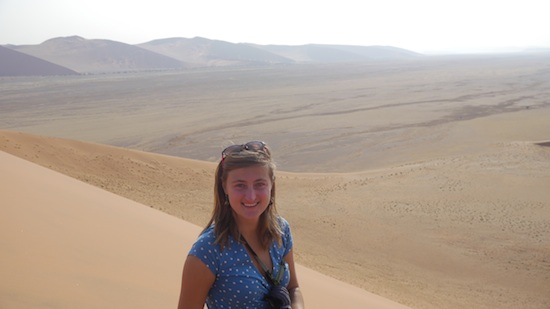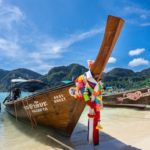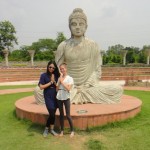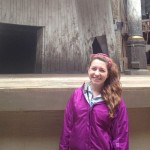The Wide Open Roads of Damaraland


By using Earth’s resources to construct man-made realities, they have achieved great feats of engineering and controlled empires that expand the borders of many modern nations. It is these great feats and architectural masterpieces that have left many tourists awestruck and intrigued by the incredible craftsmanship and ingenuity of their forefathers. And it is sites like these that tourists flock to year after year when designing their perfect vacation.
Yet, Namibia is a different type of destination. It is a place that may lack some of the amenities and historical relics that have put other countries on the tourist trail, but it is striking nonetheless–striking precisely because of its desolation, isolation and nothingness. It is dusty, it is sandy, it is empty. Yet, from this alien landscape, arises a feeling of immensity that is often overwhelming. And these bleak landscapes evoke a sense of beauty and inspiration.
It is dusty, it is sandy, it is empty.
So, while many countries boast of the plenitude of their famed attractions, what is most awe-inspiring about Namibia is its consuming vastness.
With its endless roads, wide open skies and harsh terrain, Namibia may not draw flocks of tourists running to the Sistine Chapel or Mona Lisa, but it does certainly draw a few intrepid travelers with its unparalleled geographic diversity and unique natural environments.
The feeling of emptiness and isolation does not mean that Namibia is void of attractions, however. In fact, it is quite the opposite. Namibia is a country that is rife with destinations waiting to be explored. It is a land of contrasts, where its wide open landscapes are ever-changing and transforming by the mile. There are some destinations that remind us that humans have yet to control the Earth–that they have yet to conquer it and shape it into their own constructed playground. These places allow us to see the natural world in all its raw and primal beauty.
They reveal that there are some places so inhospitable and rugged that humans have left them unscathed. Namibia is such a location.
The Wide Open Roads of Damaraland
And while it is home to stunning views and beautiful landscapes, Namibia is not an easy destination. Roads in the country are long, potholed and unpaved. The unrelenting sun beats down with ferocity and the distances mean that much of the country’s natural beauty is often viewed from behind the windshield of an air-conditioned vehicle.
We left Etosha National Park after three extraordinary days of wildlife viewing and set off to experience some of the country’s geological wonders. The landscapes in west-central Namibia elicit feelings of driving the empty roads of America’s wild west. We drove for miles, seemingly in the middle of nowhere and often in silence. At times, hours would pass before another car crossed our path. We would occasionally remark on the resemblances we saw between the desert landscapes of the country and similar terrains in Utah, Nevada, Arizona and Eastern Oregon.
One moment, we would find ourselves marveling at the expanses of red rock or pointing at the outline of pastel-colored mountains in the distance, The next we would notice piles of large orange boulders called kopjies and find ourselves face to face with desert-adapted wildlife and flora.
The petrified forest sits in the heart of the dry, rugged hills of Damaraland
Our first stop in Damaraland was the Petrified Forest that lies to the west of Khorixas.
The petrified forest sits in the heart of the dry, rugged hills of Damaraland. It contains the remains of hundreds of trees, estimated to be around 280 million years old. These trees are thought to have originated in Zambia’s Copperbelt Region. Many scientists believe that they were washed into west-central Namibia by the floods after an ice age. The moving floodwaters carried sand and mud, which covered the trees, preserving them and preventing their decay. Over time, the wood has been replaced by quartz and has resulted in trees that, aside from their physical appearance, resemble rocks in many ways.
At the Petrified Forest, we were also able to see the famous Welwitchia Mirabilis–a plant species endemic to the Namib desert that is perfectly adapted to life in the arid environment. Welwitchia plants can live up to 2,000 years.
From the Petrified Forest we continued onward to Twyfelfontein, Namibia’s first UNESCO World Heritage Site and the highlight of our trip into Damaraland. Twyfelfontein is a site that contains one of the largest conglomerations of petroglyphs in Africa. The artists of the engravings are widely believed to be the ancestors of the San hunter-gatherers that have inhabited the region for thousands of years. The engravings are estimated to be around 2,500 years old and depict many of the animal species that were found in the region, including elephants, giraffes, rhinos and lions. In total, the number of engravings exceeds 2,000.
Many of the engravings, including the “lion man” portray the transformation between man and animal.
Some of the pictorial illustrations are of animals found in other areas, such as seals and penguins. This reveals that the inhabitants of the Twyfelfontein area likely had contact with the coastal region of the country, more than 100km away. The area of the Huab Valley near Twyfelfontein was sacred to the early inhabitants of the area and held ritualistic significance. Many of the engravings, including the “lion man” portray the transformation between man and animal.
While Damaraland certainly has beautiful tourist highlights, much of the region’s appeal lies in its empty spaces–spaces that are vast, endless and ever-changing in their geological characteristics and color schemes. They are spaces where barren lands are home to a resilient and resourceful population that is struggling to survive in one of the world’s harshest environments.
As with all living organisms in the region, the people of the Namib Desert have adapted to survive in this uncompromising part of the world. They have learned to work the land, to reap its fruits and to find their basic needs for survival in a place that most humans would deem unfit for habitation.
Instead, they transform the ways of life of those who live there and give them the strength and resilience to forge a life against all odds.
There are some environments that allow themselves to be transformed and still others so uncompromising that they have yet to be controlled. Instead, they transform the ways of life of those who live there and give them the strength and resilience to forge a life against all odds.
The barren plateaus, valleys and hills of Damaraland can certainly be considered as part of the latter.
Have you traveled to Namibia? How was your trip? Email us at [email protected] for information about sharing your experience and advice with the Pink Pangea community. We can’t wait to hear from you.








